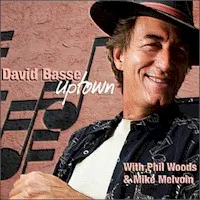Year: 2006
File: MP3@320K/s
Time: 66:43
Size: 153,9 MB
Art: Front
(7:54) 1. The Palmieri Effect
(5:25) 2. Que Seria La Vida
(8:52) 3. Guajira Dubois
(6:03) 4. Jazz Impromptu
(8:39) 5. Paginas De Mujer
(8:18) 6. Slippery
(8:24) 7. Jazzucar
(6:15) 8. Tema Para Marissa
(6:50) 9. Freehands
Two decades of working as a highly accomplished trumpeter in Eddie Palmieri's Latin jazz band has culminated for Brian Lynch with this completely ravishing recording alongside his musical mentor. While the name of the group might raise the question of "who's on first?", rest assured that this is an inspired collaboration with the less-celebrated Lynch firmly at the helm. Most of the tunes are his, and the versions of Palmieri's pieces are marked by Lynch's hand. In fact, this album marshals some playing from Palmieri, particularly on the tumbling "The Palmieri Effect," which opens the album with a roar from Palmieri's piano, that I've missed from some recent discs under Palmieri's leadership. While the program of Simpatico is clearly Latin jazz and Palmieri's salsified McCoy Tynerisms are resplendently prominent throughout, there are lovely selections that wouldn't be expected on a Palmieri album. One example is the Lynch original "Jazz Impromptu," which has a sound you'd expect from a hard-blowing Blue Note session from decades ago. The bop roots in Lynch's original compositions are even evident in a guajira-chacha like "Guajira Dubois," where guest alto saxophonist Phil Woods, hardly a supreme Latin jazzman, brings an interesting bop sensibility to the proceedings.
The seventeen musicians (in addition to the superstar Palmieri) are all playing at the top of their game, bringing out an acute brilliance in Lynch's playing that I've never heard so thrillingly projected. But the biggest surprise among this crowd of talent is the Mexican-American diva Lila Downs. Her vocals have a dusky sensuality and subtle understatement that compels re-visioning just how extroverted a great Latin jazz vocalist need be. Lynch may have revolutionized the already rising career of Downs by showcasing her in a context so far removed from her own recordings, which are deeply rooted in traditional Mexican song.
The seventeen musicians (in addition to the superstar Palmieri) are all playing at the top of their game, bringing out an acute brilliance in Lynch's playing that I've never heard so thrillingly projected. But the biggest surprise among this crowd of talent is the Mexican-American diva Lila Downs. Her vocals have a dusky sensuality and subtle understatement that compels re-visioning just how extroverted a great Latin jazz vocalist need be. Lynch may have revolutionized the already rising career of Downs by showcasing her in a context so far removed from her own recordings, which are deeply rooted in traditional Mexican song.
There's a move afoot in the jazz world to expand the parameters of Latin jazz, with Hilary Noble, Rebecca Cline and Dafnis Prieto among the prime instigators. In his own sweet way, in spite of being less radical conceptually in breaking out of a traditional Latin jazz style than those three musicians, Lynch is triumphantly pushing Latin jazz boundaries. This is a magnificent recording, whatever label you pin on it, and it makes you hope for more Lynch collaborations with his mentor in the near future. ~ Norman Weinstein https://www.allaboutjazz.com/simpatico-eddie-palmieri-artistshare-review-by-norman-weinstein.php
Personnel: Brian Lynch: trumpet; Eddie Palmieri: piano; Lila Downs: vocals; Phil Woods: alto saxophone; Donald Harrison: alto saxophone; Conrad Herwig: trombone; Giovanni Hidalgo: congas; Dafnis Prieto: drums; other players including Gregory Tardy, Mario Rivera, Boris Kozlov, Ruben Rodriguez, Luques Curtis, Robby Ameen, Pedro Martinez, Johnny Rivero, Edsel Gomez, Marvin Diz, Pete Rodriguez.
Simpático




















